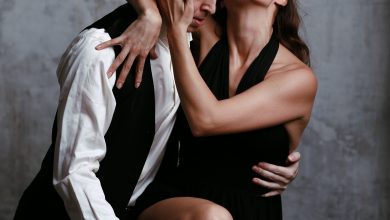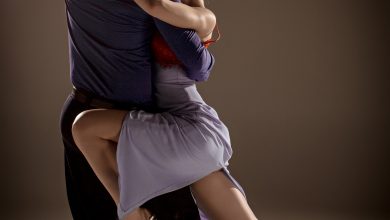The Argentine Tango Two Step Walk and its Variations

The most basic tango pattern is La Caminata (the Walk). The foundational element of the Walk is the Two-Step Walk, which has several versions. The most frequently used walk variation is El Paseo (the Stroll). To do the Paseo, begin in the neutral position (feet together). If you are the leader then step forward with the left foot then forward with the right foot. If you are the follower step backward with the right foot then backward with the left foot.
Do not leave the legs apart after the second step. Bring the free foot (the leader’s left and the follower’s right) up next to the supporting foot. Do not put weight on the free foot. This brings the couple back to the neutral position, ready to do another Two-Step Walk or another tango pattern.
This walk pattern can be varied in a number of ways. The first variation is by changing the length of each step.
For example, if both steps of the Two-Step Walk are done in place, so that you go nowhere, you’ve danced La Cadencia (the Cadence-Counting step).
If the second step of the Two-Step Walk is danced in place beside the other foot, you have danced La Caza (the Chase).
If the direction of the second step is reversed, in order to return to the starting position, this is La Cunita (the Cradle, or Rock step). Don’t keep your legs apart as you do the rock; bring your feet close together at the end of each step. This looks much more stylish.
Walk Improvisation
The Argentine tango does not consist of standard dance patterns in learnt sequences to a preset musical rhythm. The tango is about creating step patterns and combining them together in ways that integrate musicality. This creativity and improvisation is more highly valued than correctness by the most advanced tango dancers. Figuring out how to improvise to the music is one of the key skills to learn in the Argentine Tango.
Because the variations of the Two-Step Walk start and finish with the weight on the same foot, they can be combined in any sequence. For example, two Strolls, a Chase, a Stroll curving 90 degrees to the left, and another Stroll.
Another very useful variation is dancing three or four or five Rock Steps, pivoting on each step to the left to make a 360 degree counter-clockwise turn. This tango pattern is called Las Cunitas (the Cradle-Rocking Step). It’s helpful if the dance floor is blocked.
Each of these walk variations feels a little different. The Stroll travels and feels smooth. The Chase has a more abrupt feeling. It is often used at the end of phrases of music. The Cradle-Rocking pattern feels gentle, like rocking a baby.
El Circulo (the Circle) is another basic tango pattern that uses the Two-Step Walk. Just do a few Strolls, pivoting to the left after each step to circle back to the start of the dance pattern. Like Rocking patterns, Circles let you keep dancing when you’re blocked, but Circles have a different physical and emotional feel than rocking patterns.



